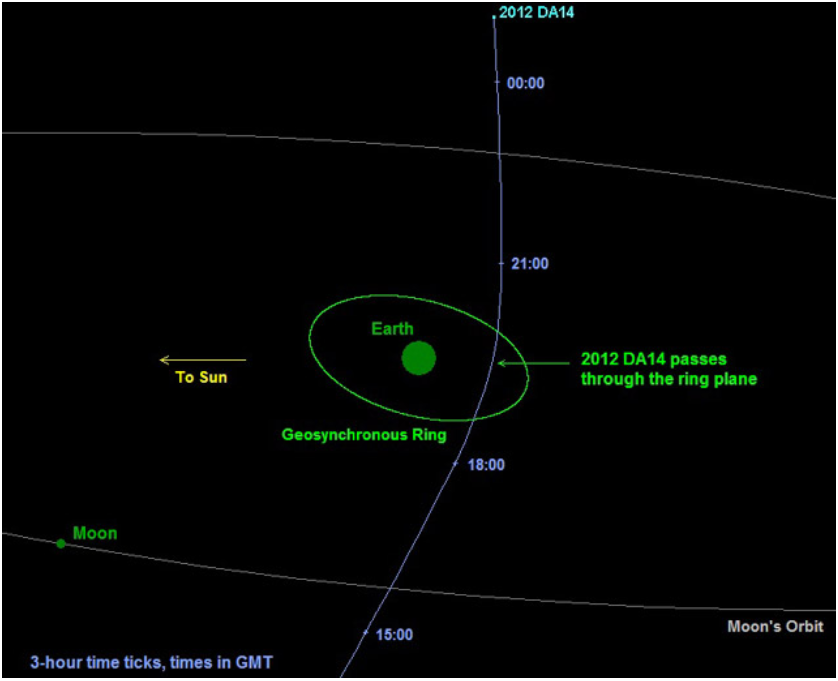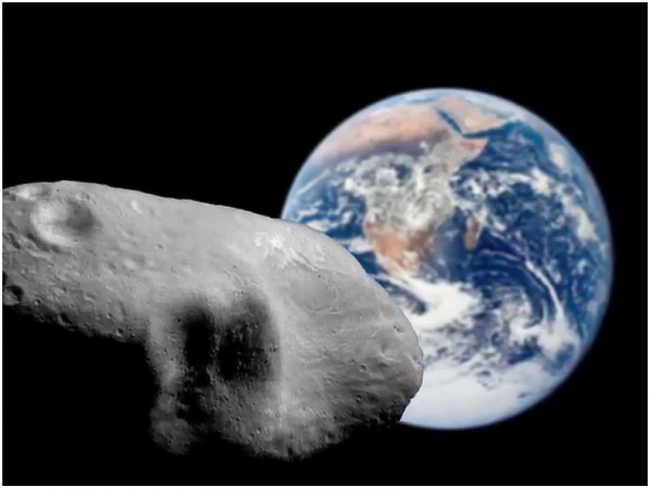Talk about a close shave. On 15 February, an asteroid about half the size of a football field will fly past Earth only 27 681 kilometres above our planet’s surface. There’s no danger of a collision, but the space rock, designated 2012 DA14, has Nasa’s attention.
“This is a record-setting close approach,” says Don Yeomans of Nasa’s Near Earth Object Program at JPL. “Since regular sky surveys began in the 1990s, we’ve never seen an object this big get so close to Earth.”
Earth’s neighbourhood is littered with asteroids of all shapes and sizes, ranging from fragments smaller than beach balls to mountainous rocks many kilometres wide. Many of these objects hail from the asteroid belt, while others may be corpses of long-dead, burnt out comets. Nasa’s Near-Earth Object Program helps find and keep track of them, especially the ones that come close to our planet.

2012 DA14 is a fairly typical near-Earth asteroid. It measures some 50 metres wide, neither very large nor very small, and is probably made of stone, as opposed to metal or ice. Yeomans estimates that an asteroid like 2012 DA14 flies past Earth, on average, every 40 years, yet actually strikes our planet only every 1 200 years or so.
The impact of a 50-metre asteroid is not cataclysmic – unless you happen to be underneath it. Yeomans points out that a similar-sized object formed the 1,6 kilometre-wide Meteor Crater in Arizona when it struck about 50 000 years ago. “That asteroid was made of iron,” he says, “which made it an especially potent impactor.” Also, in 1908, something about the size of 2012 DA14 exploded in the atmosphere above Siberia, levelling hundreds of square kilometres of forest. Researchers are still studying the “Tunguska Event” for clues to the impacting object.
“2012 DA14 will definitely not hit Earth,” emphasizes Yeomans. “The orbit of the asteroid is known well enough to rule out an impact.”
Even so, it will come interestingly close. Nasa radars will be monitoring the space rock as it approaches Earth closer than many man-made satellites. Yeomans says the asteroid will thread the gap between low-Earth orbit, where the ISS and many Earth observation satellites are located, and the higher belt of geosynchronous satellites, which provide weather data and telecommunications.
“The odds of an impact with a satellite are extremely remote,” he says. Almost nothing orbits where DA14 will pass the Earth.
Nasa’s Goldstone radar in the Mojave Desert is scheduled to ping 2012 DA14 almost every day from 16-20 February. The echoes will not only pinpoint the orbit of the asteroid, allowing researchers to better predict future encounters, but also reveal physical characteristics such as size, spin, and reflectivity. A key outcome of the observing campaign will be a 3D radar map showing the space rock from all sides.
During the hours around closest approach, the asteroid will brighten until it resembles a star of 8th magnitude. Theoretically, that’s an easy target for backyard telescopes. The problem, points out Yeomans, is speed. “The asteroid will be racing across the sky, moving almost a full degree (or twice the width of a full Moon) every minute. That’s going to be hard to track.” Only the most experienced amateur astronomers are likely to succeed.
Watch the ScienceCast video, which previews the close flyby of asteroid 2012 DA…
Credit: Science@Nasa
View the original Popular Mechanics online article

